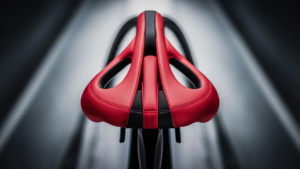Operating a butane camping stove outdoors requires care and attention. Safety and maintenance are key.
Camping trips are fun, but cooking outdoors can be a challenge. A butane camping stove offers a convenient way to cook your meals. But, using it safely is crucial. You need to know the basics of operation and how to maintain it.
This ensures not only your safety but also the longevity of your stove. In this guide, we will explain the steps to safely operate and maintain your butane camping stove. From lighting the stove to proper cleaning, we’ve got you covered. Get ready to enjoy cooking outdoors with peace of mind.
Choosing The Right Butane Camping Stove
Choosing the right butane camping stove can make your outdoor adventures safer and more enjoyable. The market offers a variety of options, each with unique features. Knowing what to look for helps you select the best stove for your needs.
Types Of Butane Stoves
There are several types of butane stoves available. Compact single-burner stoves are lightweight and easy to carry. They are perfect for solo trips or short hikes. Double-burner stoves are larger and suitable for family camping. They provide more cooking space and power.
Some stoves come with built-in windshields. These are helpful in windy conditions. There are also tabletop models that offer stability and convenience. Choose a type that fits your camping style and group size.
Key Features To Look For
When choosing a butane stove, consider its weight. A lightweight stove is easier to carry. Portability matters, especially on long hikes. Look for stoves with a reliable ignition system. Piezo ignition systems are common and very easy to use.
Consider the stove’s fuel efficiency. Efficient stoves use less butane and last longer. Check the stability of the stove. A stable stove prevents accidents and spills. Wind resistance is another important feature. Some stoves have built-in wind guards to keep the flame steady.
Look for stoves with adjustable flame control. This allows you to cook different types of food. Safety features such as automatic shut-off can prevent accidents. Choose a stove with a durable build. High-quality materials ensure the stove lasts longer.
Essential Safety Precautions
Operating a butane camping stove outdoors can be both a thrilling and practical experience. However, ensuring your safety and the safety of those around you is paramount. Let’s delve into some essential safety precautions to keep your outdoor cooking adventure safe and enjoyable.
Proper Ventilation
Avoid using your butane camping stove in enclosed spaces. Always cook in well-ventilated areas to prevent the buildup of harmful gases. I once made the mistake of cooking under a small tent canopy, and the fumes quickly became overwhelming. Lesson learned—always ensure you have plenty of fresh air circulating around your stove.
Consider the wind direction when setting up your stove. Position it so the wind helps disperse fumes away from your cooking area. This not only keeps the air clean but also makes your cooking more efficient.
Safe Fuel Storage
Proper fuel storage is crucial for avoiding accidents. Store butane canisters away from direct sunlight and heat sources. Once, I left a canister in direct sunlight, and it became dangerously hot to the touch. Always keep them in a cool, shaded area to prevent pressure buildup.
Make sure the fuel canisters are securely sealed when not in use. A slight leak can lead to dangerous situations, especially around open flames. Check for any signs of wear or damage before each use.
How do you store your fuel canisters? Do you keep them in a safe, cool place? Share your tips and experiences to help fellow campers stay safe!
By following these essential safety precautions, you can enjoy your outdoor cooking with peace of mind. Happy camping!
Setting Up Your Stove
Setting up your butane camping stove correctly is crucial for a safe and enjoyable outdoor experience. The right setup ensures your stove operates efficiently. It also minimizes any risks. Follow these steps to set up your stove properly.
Selecting A Stable Surface
First, find a flat, stable surface. This prevents the stove from tipping over. Avoid sandy or loose soil. A rock or wooden platform works well. Clear away any debris. This reduces fire risk. Stability is key for safe cooking.
Connecting The Fuel Canister
Next, connect the fuel canister. Ensure the stove is off. Check the canister for leaks. Align the canister with the connector. Twist it gently until it’s secure. Do not force it. Listen for a click. This means the connection is tight. Double-check for leaks after connecting.

Igniting The Stove
Igniting a butane camping stove outdoors can seem daunting. But with the right steps, it becomes simple. This guide will help you understand the ignition process. Follow these steps to ensure a safe start every time.
Using The Ignition System
Most butane stoves come with an ignition system. This system usually involves a built-in spark generator. First, make sure the stove is on a flat surface. Check that the gas canister is secure. Turn the gas knob slightly to release some gas. Press the ignition button until you hear a click. The stove should ignite immediately. If it doesn’t, repeat the steps. Always ensure your face and hands are clear of the burner while doing this.
Manual Lighting Techniques
If your stove doesn’t have an ignition system, you can light it manually. Begin by turning the gas knob slightly. You will hear the gas hissing. Use a long lighter or match to ignite the gas. Hold the flame near the burner. Be cautious and quick. The gas can ignite suddenly. Keep your face and hands away from the burner. Once the stove is lit, adjust the flame to your desired level.
Cooking Tips
Cooking outdoors with a butane camping stove can be a delightful experience. With the right tips, you can prepare delicious meals safely and efficiently. Here are some essential cooking tips to make the most of your camping stove.
Adjusting The Flame
Controlling the flame is crucial for cooking success. Start with a low flame and increase gradually. This helps avoid burning your food. Watch the flame closely. Wind can affect it, leading to uneven cooking. Always use the stove’s built-in adjuster for better control.
Using Appropriate Cookware
Using the right cookware is important. Choose pots and pans with flat bottoms. This ensures even heat distribution. Avoid oversized cookware. It can cause instability and spills. Opt for lightweight and durable materials like aluminum or stainless steel. These materials heat up quickly and are easy to clean.
Regular Maintenance
Regular maintenance of your butane camping stove ensures it works safely. It also helps the stove last longer and perform better. Here are key steps to keep your stove in top shape.
Cleaning The Stove
After each use, let the stove cool down. Wipe off any spills or food particles. Use a damp cloth for this. Avoid soaking the stove in water. It can damage the components. For stubborn dirt, use a mild soap solution. Rinse and dry it thoroughly. Regular cleaning prevents blockages and buildup.
Checking For Leaks
Before each use, check for gas leaks. Connect the butane canister and listen for hissing sounds. If you hear any, there’s a leak. You can also use soapy water to check. Apply it to the connections. If bubbles form, there’s a leak. Tighten the connections and check again. Never use the stove if you detect a leak. Safety first.
Troubleshooting Common Issues
Ensure safe use of your butane camping stove outdoors by checking connections and keeping it level. Regular maintenance avoids leaks and malfunctions.
Operating a butane camping stove outdoors can be a rewarding experience. Yet, encountering issues while using it can be frustrating. Knowing how to troubleshoot common problems can save your trip. Let’s dive into some typical issues and how to fix them.
Weak Flame
A weak flame can ruin your cooking experience. The most common cause is low fuel. Check your butane canister to ensure it’s not running low.
Another issue could be a clogged burner. Dirt and debris can block the gas flow. Clean the burner regularly with a small brush.
Cold weather can also affect the performance. Butane gas doesn’t vaporize well in low temperatures. Warm the canister with your hands to improve the flame.
Ignition Problems
Struggling to ignite your stove can be frustrating. First, ensure the canister is properly connected. A loose connection can prevent ignition.
Check the igniter switch. Dirt or moisture can interfere with its function. Wipe it clean and try again.
Sometimes, the problem lies with the gas flow. Turn off the stove, disconnect the canister, and reconnect it securely. Ensure the valve is fully open.
Have you experienced any of these issues? How did you solve them?
Taking care of your butane camping stove ensures a hassle-free outdoor adventure. Be proactive in troubleshooting to keep your trip enjoyable.
Storing Your Stove
Ensure your butane camping stove is used on a flat surface. Keep it away from flammable materials. Regularly check for leaks and clean after each use.
Storing Your Stove
When your adventure comes to an end, and it’s time to pack up, properly storing your butane camping stove is crucial for safety and longevity. Storing your stove correctly ensures it’s ready for the next outing and keeps you safe from potential hazards. Let’s dive into the essential steps for effective storage.
Proper Disassembly
First, make sure your stove is completely cool before handling it. Disconnect the butane canister and store it separately.
Clean the stove thoroughly to remove any food residue or spills. This prevents rust and keeps pests away.
Safe Storage Practices
Store the stove in a dry, cool place away from direct sunlight. Moisture can cause rust, and heat can damage the components.
Keep the stove in a sturdy storage box or bag. This protects it from dust, dirt, and physical damage.
Always store the butane canister upright in a well-ventilated area. Avoid places with high temperatures to prevent leaks or explosions.
By following these storage tips, you’ll ensure your butane camping stove remains in top condition, ready for your next outdoor adventure. Are there any other tips you find useful for storing your camping gear? Share your insights in the comments!
Frequently Asked Questions
Can You Leave Butane Canister Outside?
Leaving a butane canister outside is not recommended. Extreme temperatures can cause the canister to leak or explode. Store in a cool, dry place.
What Are The Disadvantages Of A Butane Stove?
Butane stoves can struggle in cold weather and high altitudes. They have limited fuel availability and canisters may be costly.
Can You Leave The Butane In The Portable Stove?
No, it’s unsafe to leave butane in the portable stove. Always remove the canister after use. Store it safely.
How Long Does Butane Camping Stove Last?
A butane camping stove typically lasts for 2-3 hours on one 8 oz. Canister. Usage duration varies based on flame intensity and frequency.
Conclusion
Operating and maintaining a butane camping stove is easy with the right steps. Follow safety tips to prevent accidents. Clean the stove regularly to ensure it works well. Store fuel safely and check for leaks. Always cook in well-ventilated areas.
This keeps you safe and your meals delicious. Happy camping and safe cooking!








